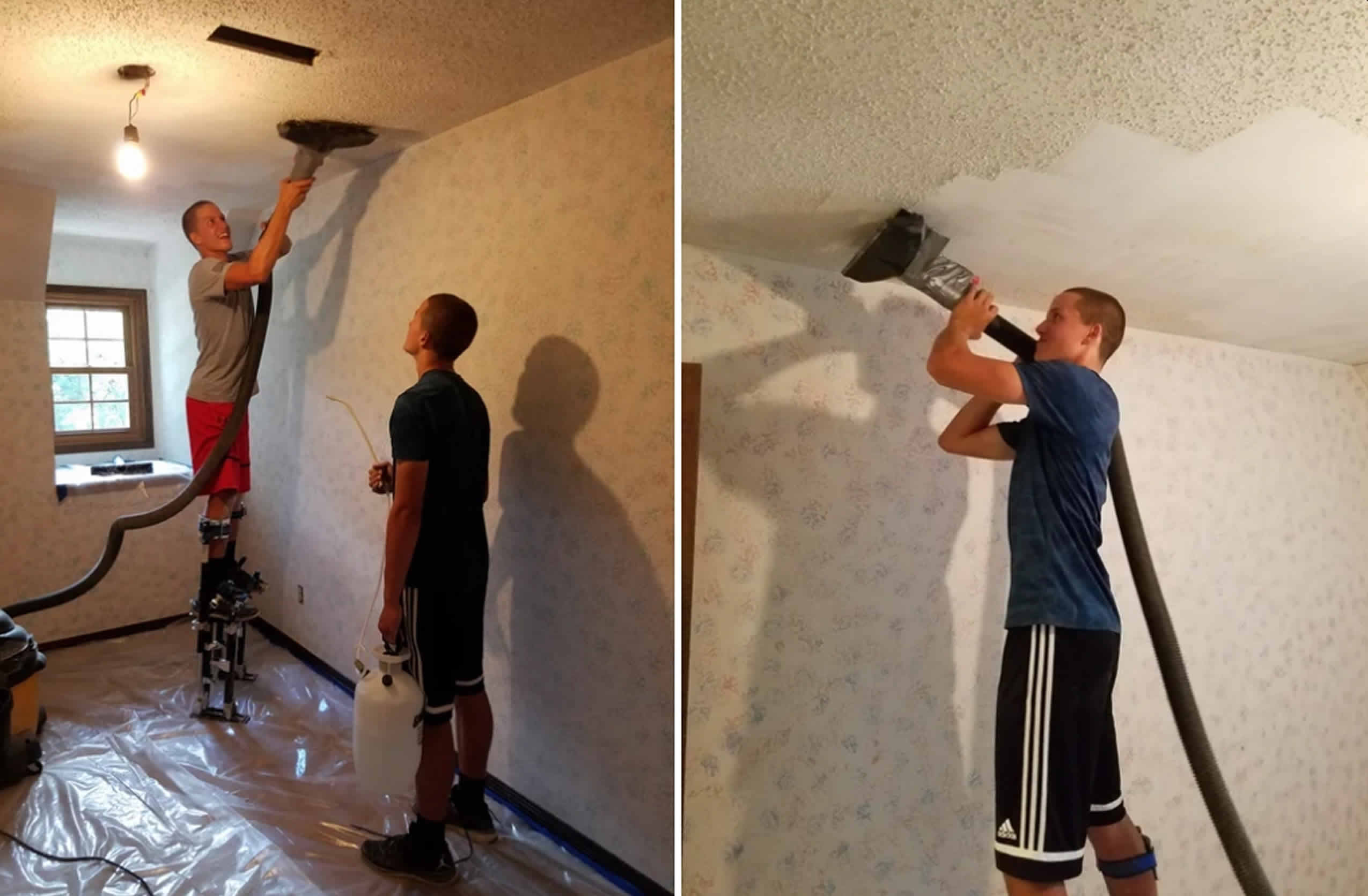Popcorn ceilings are so called because they look like popcorn. They are usually white, with a bumpy, lumpy texture. They were popular in the 70s and 80s, and can help muffle sound and hide imperfections in your ceiling.
But they also have significant drawbacks — since they are no longer in fashion, they can lower the value of your home if you are thinking about putting it on the market.
Not only do they do poorly in moisture, making them a poor choice for bathrooms, but they also have other problems. Popcorn ceilings are known to:
- contain asbestos if installed before 1980. Because this is a potential safety hazard, numerous laws limit asbestos exposure;
- cause harsh shadows due to their uneven texture. You need proper type of lighting to soften these shadows;
- discolor over time, creating a sloppy look in the roo;
- attract and collect dust and dirt on their jagged edges and crater-like surfaces;
- crumble, loosen, and drop pieces onto furniture and floors;
- look dated rather than modern and attractive.
The asbestos in popcorn ceilings is not dangerous as long as the ceiling remains intact, but if the ceiling is damaged, it can be a health hazard. For these reasons you may want to consider removing popcorn from your ceilings.
Factors Affecting the Cost of Popcorn Ceiling Removal
Some factors that affect the cost of popcorn ceiling removal include the height of the ceiling, the size of the room, and the cost of disposal.
- Height of ceiling
Higher ceilings are more difficult to remove popcorn from and therefore more expensive. If you have particularly high or vaulted ceilings, workers may need taller ladders or scaffolding to reach them.
- Disposal of asbestos
How you dispose of popcorn ceilings depends on whether they contain asbestos. If they do, the waste must be taken to an approved asbestos disposal facility. If your ceilings do not contain asbestos, you can throw the waste out with your regular trash or pay extra to have it taken directly to a landfill.
- Size
The larger the size of the room, the more expensive it will be to remove popcorn ceilings. Small rooms and bathrooms will be cheaper, while larger rooms will be more costly. If you want to remove popcorn ceilings from your entire home, be prepared to pay more.
Related Popcorn Ceiling Removal Services
There are several services that influence popcorn ceiling removal cost, such as asbestos disposal, ceiling sanding, and painting.
- Asbestos Removal
When removing popcorn ceilings that contain asbestos, special care must be taken because exposure to asbestos has been linked to lung cancer and mesothelioma. Not only will professionals need to take extra steps to protect your home from asbestos contamination during the removal process, but they will also need to dispose of the debris in an approved recycling point.
- Sanding and Repainting
After removing the popcorn ceiling, your room will not look its best. Sanding and repainting the ceiling will be necessary to give it a finished look. Whether you want a smooth, clean white ceiling or a colored or textured ceiling, painters can help you make your interior design dreams come true. But this will come with an additional cost.
Removing Popcorn Ceilings Yourself or Hiring a Professional
If your popcorn ceiling does not contain asbestos, you can remove it yourself. However, remember that this is a messy and labor-intensive job. You will need tools such as a ceiling scraper or drywall sander, vacuum cleaner, and a spray bottle to wet the ceiling material, and safety equipment such as gloves and goggles. Even if your ceiling does not contain asbestos, it often makes sense to leave this home improvement project to a professional.
In the event that your ceiling does contain asbestos, you should definitely hire professional help. It can be harmful for your health and the health of your family if you try to do it yourself

